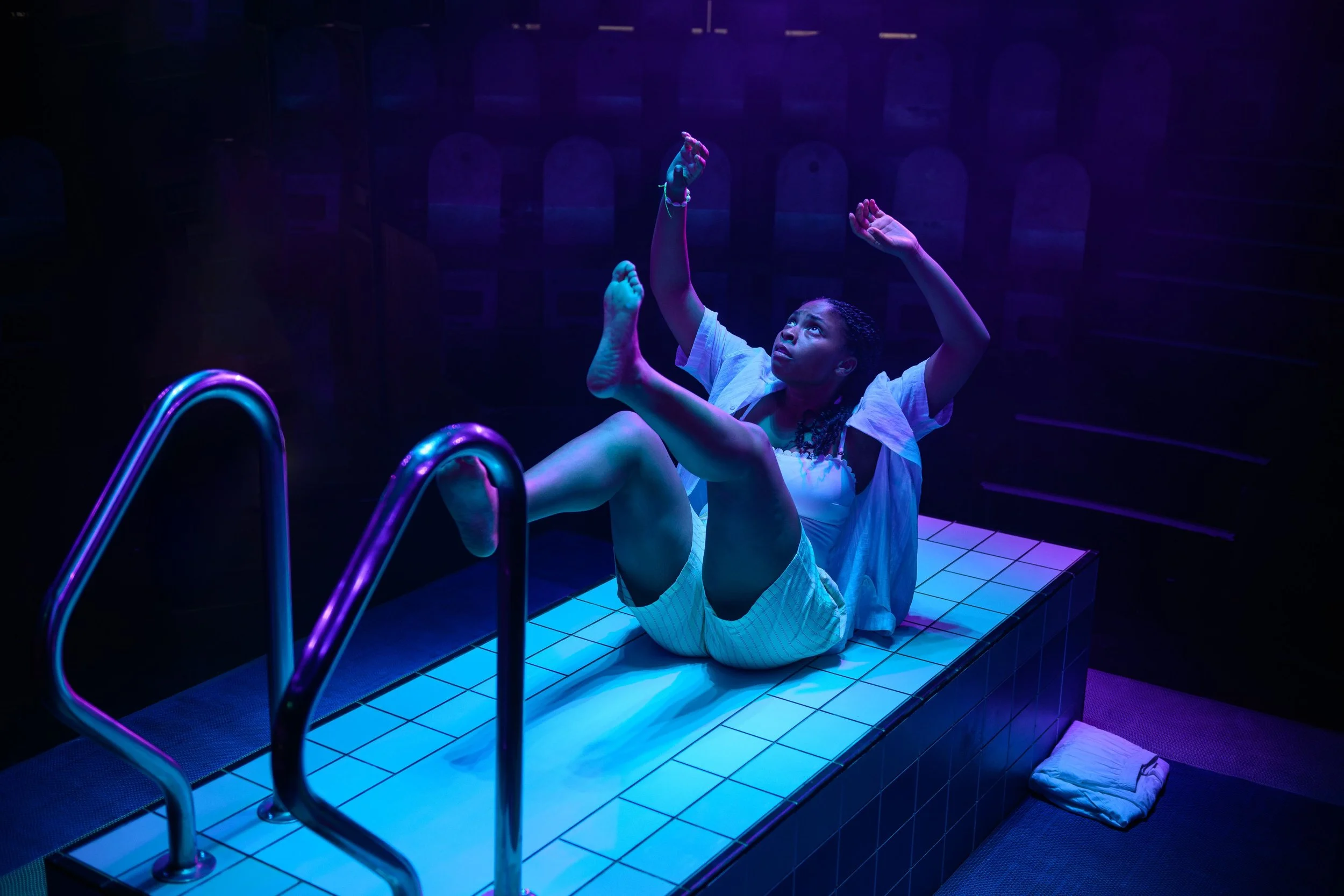To reconcile with water, through fear and grief
Responding to How I Learned to Swim by Somebody Jones
Frankie Hart as Jamie in How I Learned to Swim | Photo: David Monteith-Hodge
Being in any body of water feels surreal, although I wouldn’t exactly say it puts me at ease – to me, zoning out in the sea feels more like tempting fate than relaxing, unlike nodding off in a park or sitting in front of a campfire. There’s always something else in the water with you, whether it’s the creatures or the temperament of the water itself. I can vicariously relax by talking to people for whom floating is like second nature, and I am just as interested in talking to those who are certain that any pool or sea is the last place they’d willingly take themselves.
More often than not, someone’s relationship to water is shaped by an experience they’ve had at the hands of someone else early on in life. For me, one particular memory sticks out: when I was in the sea in Jamaica with my family, and my mum’s friend thought it was funny to throw me into the water. When you’re pulled or thrown into something, and it doesn’t so much catch you as let you fall through it, what choice do you have but to perceive it as an enemy? I was drawn to How I Learned to Swim because I was intrigued as to how it would go about answering the question of the communality and perceived danger of being in the water, and any other questions the play might pose. For Jamie (Frankie Hart), an early moment with a body of water – being yanked into the pool by the class bully at a party – put her off, so much so that the next time we saw her in the water was when she took her first swimming lesson at the age of 30.
Playwright Somebody Jones moves beyond the literal when considering what else affects one’s perception of bodies of water. For Black people, there are certainly non-human factors; for example, Jamie mentions the common myth that Black people’s bones are too heavy for the water, so it’s more difficult for us to float. Her mother’s superstitious reticence towards the sea, and what it holds, manifested in her forbidding Jamie from attending swimming lessons as a child.
Frankie Hart as Jamie in How I Learned to Swim | Photo: David Monteith-Hodge
But are all of the influences negative? Jamie and her brother Baz’s attitudes to water are polar opposites: while Jamie nervously toes the edge of the pool, Baz cannonballs into the water every chance he gets. Throughout the play, Jamie chases this difference to try and close it, or at least understand what hides within it. Along the way, she inevitably encounters some of the good that lies in the relationship between humans and water. As with any personal quest, there are the teachers, the obstacles, the sages, the supporters. We meet all these people, each skilfully played by Hart, including Jamie’s charming swimming teacher, Molly, Jamie’s parents, and the bully at the childhood pool party. As she goes through her swimming lessons and sessions with a seer, who is questionably reliable at first but later proves his astute instincts, Jamie begins to wonder what planes our relationship with water exists on, and whether it can go beyond the limitations of the human world. We learn that Jamie’s relentless search for the good in water is in the hope of finding Baz, who she hasn’t seen since he took himself surfing at night. After finding out about her brother’s depression from her parents, she finally starts to read between the lines of this decision.
Jones deftly weaves tales of Black history into the story. One of these tales is of Drexciya, the underwater world populated by the children of pregnant Black women who jumped or were thrown overboard by slave traders. Through the seer, we also learn about Mami Wata, a water spirit that Jamie is encouraged to leave a sacrifice for, even if it is a shell with a $3.99 price tag sticking out. With each swimming lesson, we watch Jamie build a relationship of trust with the water, albeit precarious, steadily growing closer to her departed brother through trying to understand what drew him to hurtle towards the pool as a child and, later, to go beyond Earth to be closer to the water, further from his Earthly struggles.
How I Learned to Swim is a personal, affecting show that illustrates how our relationship with water is as broad as water itself: water the playground, water the enemy, water the sun lounger, water the friend. Watching this show, I saw my own fears and hesitations reflected, but I also saw just how much someone can love and need water – water the friend, water the confidant. In a beautiful moment, Jamie finds herself supported by three mediums: Mami Wata, the water itself, and a kind, Black port police officer who follows his gut to rescue Jamie at sea when she goes looking for her brother late at night. To me, this moment highlights the breadth of Black community existing not only in literal forms of support but also the instincts that lead it to you, informed by the history and folklore of generations past.
How I Learned to Swim is an affirming play; a reminder that, yes, our bodies were made to be at ease in the water, and there are worlds beyond what our hands can grasp.


